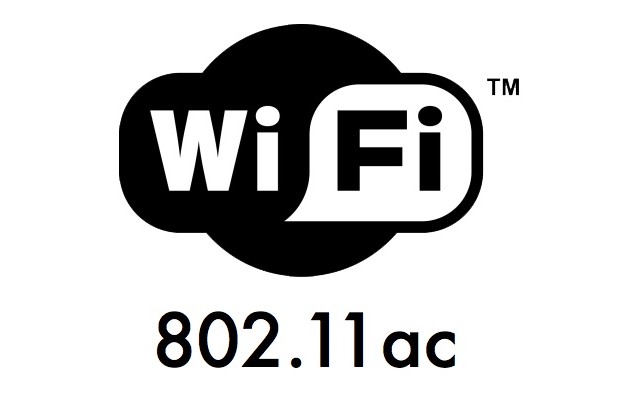By Bjørn Jensen, February 15, 2013
802.11ac is the next big thing in wireless. It’s expected that by 2015 it will be so common that an estimated one billion devices will have it.
Our industry should be excited about this because it means more sales replacing “antiquated” network gear to make way for newer, more reliable services.
Also, it’s aimed at higher data rate services, especially high definition wireless video. This is great news for those of you that have clients wanting to run HD video to multiple displays but can’t or don’t want to rip open walls to get the wires in place.
In this article I’m going to try and briefly go over what’s different between what we have now with 802.11n and what’s different and/or the same about 802.11ac.
Understanding 802.11ac Technology
Basically 802.11ac can be looked at as an extension of 802.11n in which the core functions of MIMO (multiple input, multiple output) and wider channel bandwidth are advanced even further. In other words, 802.11ac improves on where 802.11n left off, this time ditching the 2.4GHz frequency altogether in favor of the 5GHz range.
The 5GHz range has more spectrum than the 2.4GHz. 2.4GHz has only 83.5MHz with a total of 3 channels whereas 5GHz has 480MHz with a total of 24 channels.
Of course this has its pros and cons, especially in the field of throughput and range—the higher the frequency the faster the theoretical speed; the lower the frequency the greater the range.
Understanding the latter is easy when you think of the analogy of a car dropping bass rolling down the street. You hear the bass long before you can make out the tune because the bass is on a much lower frequency than the mids and highs. The same goes for wireless. This makes the 5GHz frequency a bit of a drawback when it comes to range but luckily there’s a relatively new technology, beamforming, discussed below.
Speed is increased in numerous ways. As in 802.11n, where channel bonding made it possible to go from a 20MHz channel to a 40MHz channel, now with 802.11ac one has an 80MHz channel bandwidth available for connected devices with 160MHz available as an option.
Since 802.11ac allows for up to 8 simultaneous spatial streams, while 802.11n only allowed up to 4 (with today’s flagship 802.11n devices generally carrying only 3), the data rate increases even more. Keep in mind that every stream increases the data rate. For instance, a second stream doubles the rate, a third stream triples the rate, a fourth stream quadruples the rate and so on and so on.
802.11ac also brings the addition of MU-MIMO (multi-user MIMO) which allows transmission of multiple simultaneous downlink frames to different receivers.
Normally each single stream device must take a turn to receive frames. Examples of single stream devices are smartphones, tablets, VoWifi, and any 802.11 a/b/g devices. If you have a 4 stream MU-MIMO AP you can send frames to 4 different single stream devices at once!
802.11ac also has much higher modulation (and therefore higher data rates) than previous versions of WiFi by utilizing 256-QAM.
What does that mean? The best way to understand this is to start by looking at BPSK (Binary Phase Shift Keying) which is 1 bit per modulation symbol. Think of a modulation symbol as a waveform. The waveform represents your bits that are transmitting over a specific frequency channel. If you look at a single waveform that could represent a 0 and if you flip it upside down (changing the phase), 180 degrees, it now represents a 1.
The next step is to take the modulation even higher. That next step is known as QPSK (Quadrature Phase-Shift Keying), which is two bits per waveform. This happens because instead of changing the phase/waveform 180 degrees you now do it at 90 degrees. This means that I get 4 total phase shifts instead of the 2 that I got from just changing it 180 degrees. This happens in the same frequency and on the same channel as before which ultimately means that the data rate just doubled because you’re sending twice as much data over the same medium.
Of course today this can be raised even higher. The 802.11n standard provided 64-QAM (Quadrature amplitude modulation), which is essentially 6 bits per waveform. As the name implies, this varies the phase AND the amplitude in order to increase the total amount of bits per waveform.
802.11ac takes it the furthest at 8 bits per waveform with 256-QAM, increasing to speeds thought not possible before when it comes to WiFi because the range wouldn’t have been effective enough.
However, with a relatively new technology known as transmit beamforming (Tx BF), this is now possible.
The Virtues of Beamforming
Beamforming is, in my opinion, one of the coolest things to happen to WiFi. For now it’s only been found on some of the higher end products and only a very few companies have had success with it. It was poorly implemented in 802.11n but it seems this time it will be implemented as a standard.
Cisco and Ruckus have been incorporating it in their devices for a few years now and I can definitely say Ruckus is amazing when it comes to beamforming, most likely due to their innovative adaptive antenna hardware.
I can’t remember where I heard this analogy first but it’s probably the best I’ve ever heard for explaining it. Think about a dark square room with no lights. If you light a candle you’ll be able to look around and see things but depending on the size of the room you may not be able to see things in detail until you walk very close to them. Unfortunately with a single candle there’s no way to focus the light to what you’re looking at (like a flashlight) and as you move to see something in a corner you have wasted light illuminating things you may not care to see all around you.
Imagine if you could take the wasted light that’s illuminating in all directions from the candle flame and focus it into the area you’re trying to reach. Well, that’s what beamforming does. It focuses the signals directly to the connected device. This way there is little to no wasted signal and the distance, as well as the fidelity, are increased.
The combined usage of the aforementioned improvements increases the “spectrum efficiency” thereby enabling larger frame sizes which in turn also increases the data rate.
Speeds Up to 7 Gbps?
So you may ask, “With all of these improvements what kind of speeds can I potentially get?”
Well there is no specific answer as it depends on each piece of hardware you’re connecting as well as how it’s configured. Technically, if you were using the optimal hardware, in a Faraday cage, and the stars align perfectly, you could see 7GBps. However, you’ll never see that with 802.11ac in a real-world scenario, especially not with one connected device.
Somebody over at Wikipedia actually did the work for me and created an excellent table demonstrating the kind of speeds you can expect using various configurations. Please note that in the table below all rates assume 256-QAM, rate 5/6:
Obviously people will want to know what’ll happen to their older products that are only 2.4GHz capable.
Luckily it’ll be fully backward compatible with 802.11a/n and the APs will be dual band to be able to support the 2.4GHz frequency with 802.11n.
The Drawbacks of 802.11ac … and Opportunities for CE Pros
The major problem with 802.11ac, and the reason many people in the enterprise space are a little worried about it, is the fact that channel bonding decreases the amount of useable channels.
In fact, if you’re thinking of using 802.11ac in 160MHz mode you have just brought your channel choices down from 9 (40MHz channels) to 2 (160MHz channels)! We all know how hard it is to find an open channel using 2.4GHz which only affords us 3 non-overlapping 20MHz wide channels.
I asked Eric Stresen-Reuter, Technical Director at Ruckus Wireless, what he thinks and he said, “The issue is going to be the difference between 11ac in home entertainment and that used in the enterprise. [802.11ac] will be a nice add-on for high-end homes since the environment is more conducive to the increases in channel size.”
That’s great news for the integrators working on the very large homes, far away from their neighbors. What about the Manhattan apartments, the smaller more congested neighborhoods or the corporate office space?
Well that could get tricky. This should make the folks over at Metageek very happy as integrators will have to learn to determine just how much congestion there is in the airwaves and take the appropriate steps from there.
In fact, when asked if they could comment on this new technology, Mark Jensen, who refers to himself as a “Product Geek” at Metageek, said, “The big thing to remember with 802.11ac is that it is a 5 GHz-only technology. While the 5 GHz band is fairly underutilized (for now) ac will spur its inevitable crowding. Judging by how popular it’s likely to become in residences, this explosion in wireless congestion could mean big problems for connectivity and throughput sooner rather than later. With the huge benefits that ac brings, it also means you really have to be up on your skills for proper WiFi deployment and troubleshooting. After all, WiFi—of any variety—is only as good as how well it was set up and maintained.“
802.11ac Products and Timelines
Consumer versions of 802.11ac are already out there.
Just like 802.11n we saw companies jump the gun and start selling “Pre-N” units early on. The same goes this time with 802.11ac and as usual I wouldn’t even recommend trying it until they work out all of the kinks.
For instance, MU-MIMO is not yet available in the first phase of 802.11ac but will hopefully be implemented before the final ratification. A simple Google search will reveal many new consumer products out there. As for the enterprise versions, those will most likely become available en masse in Q1 of this year although some companies have already become early adopters.
The IEEE is expecting to ratify the protocol by Q4 of this year. I for one would love to try one out in our lab, although I think I’ll wait a little longer before I do. Say, early Q2?
This article first appeared in CEPro here.
News Technology Wireless


